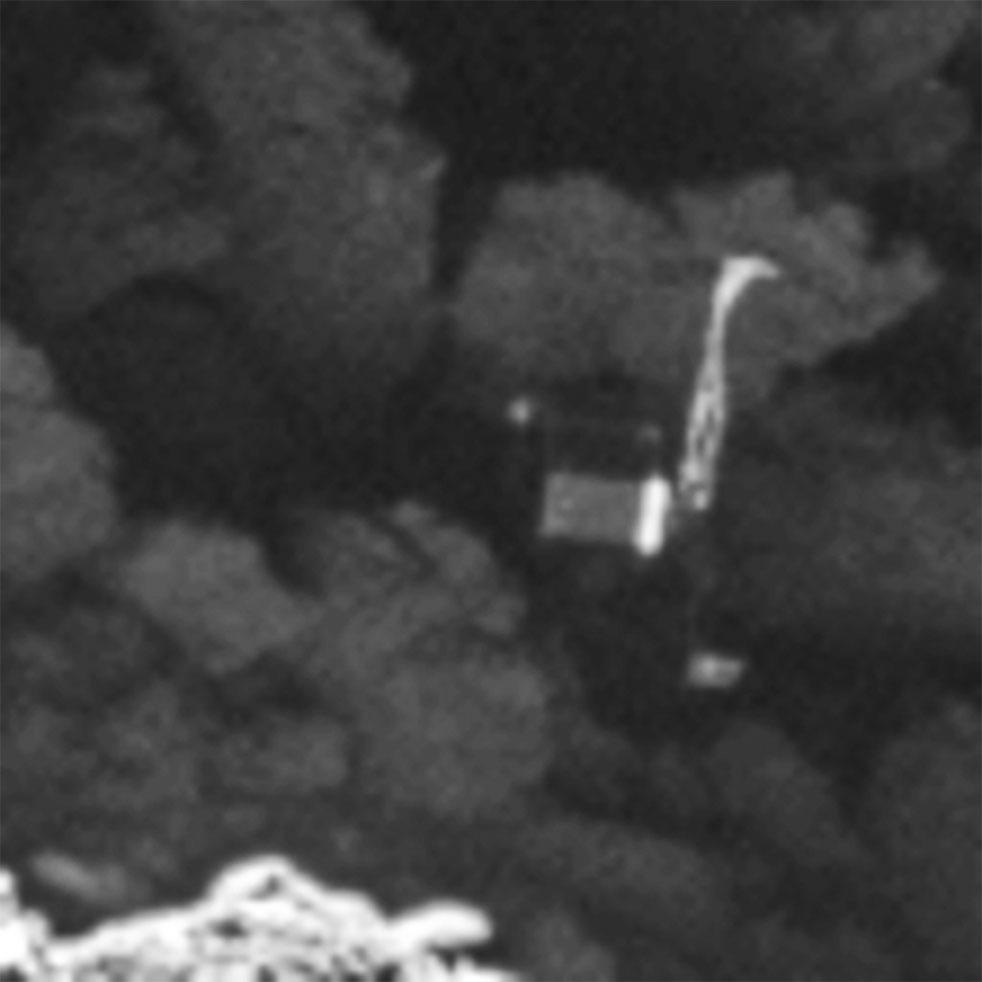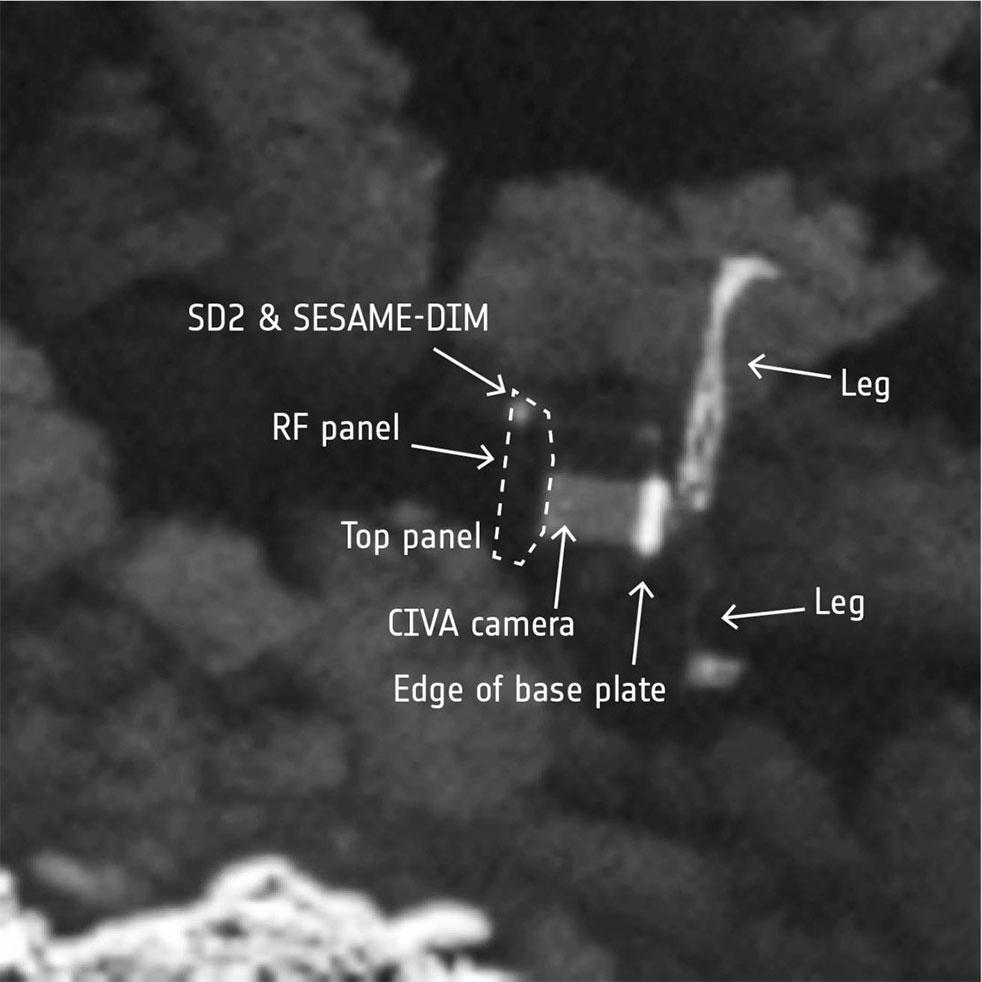Rosetta Finds Philae Crammed Into A Crack On Comet Surface
More than a little drama has happened with the Rosetta mission to Comet 67P/Churyumov–Gerasimenko. Rosetta is the orbiter that circled the comet taking images and recording data while the Philae was a lander that was going to head down to the surface of the comet and send back even more data. The problem was that things didn't go as planned for Philae.
Philae was last seen when it touched down on a section of the comet called Agilkia, but it bounced off the comet and flew on for two more hours and ended up at a location dubbed Abydos on the smaller lobe of the comet. The problem for scientists on the mission was that the exact location of Philae was unknown and it was considered lost, until now.
"With only a month left of the Rosetta mission, we are so happy to have finally imaged Philae, and to see it in such amazing detail," says Cecilia Tubiana of the OSIRIS camera team, the first person to see the images when they were downlinked from Rosetta yesterday.
Rosetta used its high-resolution camera and has finally found the location of Philae. The image above was taken on September 2 by the OSIRIS narrow-angle camera as the Rosetta orbiter came within 2.7km of the surface. The image shows Philae's main body along with two of its three legs. As you can see in the image, the Philae lander is far from sitting in an ideal orientation explaining why it has been so hard to keep in touch with the lander.
"This remarkable discovery comes at the end of a long, painstaking search," says Patrick Martin, ESA's Rosetta Mission Manager. "We were beginning to think that Philae would remain lost forever. It is incredible we have captured this at the final hour."
"This wonderful news means that we now have the missing 'ground-truth' information needed to put Philae's three days of science into proper context, now that we know where that ground actually is!" says Matt Taylor, ESA's Rosetta project scientist.
"Now that the lander search is finished we feel ready for Rosetta's landing, and look forward to capturing even closer images of Rosetta's touchdown site," adds Holger Sierks, principal investigator of the OSIRIS camera.
SOURCE: ESA



